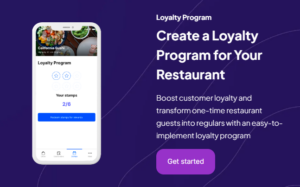- Solutions
-
-
Use Cases
-
-
-
- Our Resources
ARTICLES
- Blogs
- Case Studies
- Everything you need to know
DOWNLOADABLES
- eBooks & Whitepapers
- Videos
- Company
- Contact Us
- Request Demo
Use Cases
ARTICLES
DOWNLOADABLES
When hundreds of new restaurants come and go every year, attracting and retaining repeat customers is a taller order than ever before.
While top-class food and service are essential ingredients to success, they alone may not be enough to ensure repeat business from existing customers.
That’s where customer loyalty software truly shines.
A successful loyalty program is a great way to build and maintain strong relationships with diners. Restaurants can increase customer retention, boost revenue, and enhance overall guest satisfaction, while repeat customers can enjoy exclusive rewards and various significant benefits.
This article explores the key benefits of implementing customer loyalty software in your restaurant, helping you to not only meet but exceed customer expectations.
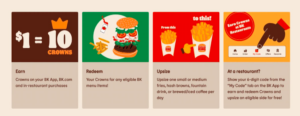
Digital loyalty programs are designed to reward repeat customers, making them feel valued and appreciated.
By offering incentives such as discounts, free food, special members only events, bonus points, or exclusive offers, the best restaurant loyalty programs establish a sense of belonging among their patrons.
This sense of loyalty motivates customers to return more frequently to earn and redeem their rewards.
For example, a points-based system that offers a free meal after ten purchases encourages diners to keep coming back until they reach that goal.
Studies have shown that increasing customer retention rates by just 5% can lead to a profit increase of 25% to 95%.
Restaurants with a successful program often see significant improvements in retention.
According to a report by Accenture, 77% of consumers are more likely to stay with a brand that has a strong loyalty program and program benefits. This data underscores the value of loyalty software in fostering repeat business and long-term customer relationships.
Acquiring new customers can be five to seven times more expensive than retaining existing ones.
By focusing on customer retention through loyalty programs, restaurants can save on marketing costs while maximising the lifetime value of each customer.
Loyal customers are more likely to spend more per visit to earn loyalty points, increasing overall revenue without the need for continuous customer acquisition efforts.
Loyalty programs often encourage customers to spend more to reach a threshold established by the rewards program.
For instance, if a program offers birthday rewards or loyalty points for purchases over a certain amount, customers may choose to order an extra dish or dessert to reach that level.
Additionally, exclusive offers for loyalty members, such as limited-time discounts on premium menu items or a free beverage, can also drive higher spending.
Data from industry reports suggest that members of loyalty programs can spend up to 18% more than non-members.
One of the key advantages of loyalty software is the ability to collect and analyse data from your existing customers.
This data can be used to tailor your marketing strategies to individual preferences, increasing the effectiveness of promotions.
For instance, if a customer frequently orders vegetarian dishes, the restaurant can send personalised offers on vegetarian specials or new menu items.
This level of personalisation not only improves the customer experience but also strengthens the bond between the restaurant and the customer.
Loyalty software enables restaurants to stay connected with their customers through various channels.
Push notifications and emails can be used to remind customers of their rewards, inform them of new promotions, or invite them to exclusive events.
These targeted communications help keep the restaurant top-of-mind and encourage frequent visits. Additionally, special offers tailored to a customer’s past behaviour—such as free drinks or a discount on their favourite dish—can drive immediate engagement and repeat business.
A good digital rewards program tracks a wealth of data, including customer preferences, purchase history, and visit frequency. This data is invaluable for understanding customer behaviour and identifying trends.
For example, a restaurant may discover that a particular dish is popular among loyalty members, prompting them to promote it more widely or develop similar menu items.
The ability to analyse this data allows restaurants to make informed decisions that align with customer interests.
By leveraging the insights gained from loyalty software, restaurants can fine-tune their menu offerings to better meet customer demands.
They can also experiment with pricing strategies, such as offering bundle deals to loyalty members or introducing dynamic pricing during off-peak hours.
In addition, data-driven promotions—such as offering a discount on a slow-moving item to frequent customers—can help boost sales and reduce waste.
Overall, data-driven decision-making ensures that the restaurant’s strategies are both effective and customer-centric.
Loyalty software is designed to enhance the overall customer experience by making it easy and rewarding for customers to participate in the reward program.
Features such as automatic point tracking, instant redemption of rewards, and personalised offers contribute to a seamless experience.
When customers feel redeeming rewards is easy to do and that they are genuinely benefiting from the loyalty scheme, their satisfaction and loyalty to the restaurant increase.
In today’s digital age, customers expect convenience from restaurant loyalty software and mobile-friendly loyalty platforms deliver that. Many loyalty programs are accessible through smartphone apps, allowing customers to check their points, view available rewards, and receive notifications on the go.
This level of accessibility not only improves the customer experience but also encourages more frequent engagement with the program.
Furthermore, mobile platforms can integrate with other digital services, such as online ordering or reservation systems, creating a unified and convenient experience for the customer.
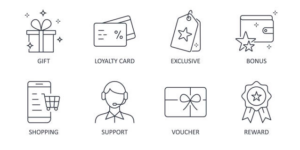
Restaurant loyalty software are specialised tools designed to help businesses, generally restaurants, build and manage customer loyalty programs.
These programs aim to encourage repeat business by rewarding customers for their continued patronage. The software automates various aspects of loyalty programs, such as tracking customer purchases, managing rewards, and collecting valuable customer data.
Loyalty software typically collects this data from customer interactions, such as purchases or engagement with marketing campaigns, and then uses this data to assign points, unlock birthday rewards, or provide personalised offers.
The software also often includes a user-friendly interface for both customers and staff, making it easy to enroll customers in the program, track their progress, and redeem rewards.
In a points-based program, customers who participate in the loyalty scheme earn points for each purchase they make.
These points can be accumulated and redeemed for rewards such as discounts, free items, or special offers. For example, a customer might earn one point for every dollar spent, with 100 points redeemable for a free entrée.
Points-based systems are simple and straightforward, making them popular among restaurants.
Tiered loyalty programs reward customers based on their level of engagement, often categorised into tiers such as Bronze, Silver, and Gold.
As customers reach higher tiers, they unlock more valuable rewards or exclusive benefits.
A Gold member might receive priority seating or access to limited-time menu items. Tiered programs incentivise customers to increase their spending to achieve higher status.
In a paid membership program, customers pay a fee to join an exclusive club that offers special benefits. These benefits might include discounts on every purchase, complimentary items, or access to members-only events.
Paid membership programs create a sense of exclusivity and can generate additional revenue streams for restaurants while fostering loyalty among committed customers.
Referral programs encourage existing customers to refer new customers in exchange for rewards.
For example, a customer might receive a discount or free item for each friend they successfully refer. Referral programs leverage word-of-mouth marketing to attract new customers while rewarding loyal patrons for their advocacy.
Integration with the POS system allows the loyalty software to automatically track purchases and assign points or rewards based on real-time data.
This streamlines the process for both customers and staff, as points are added immediately after a transaction is completed. It also ensures that rewards are applied accurately at the time of purchase, enhancing the overall customer experience.
By integrating with CRM tools, loyalty software can leverage customer data to personalise the loyalty program experience.
This includes sending targeted marketing messages, tracking customer preferences, and analysing customer behaviour to identify trends.
CRM integration helps create a more tailored and effective loyalty program that resonates with individual customers.
Many modern loyalty programs are accessible via mobile apps, allowing customers to check their points balance, view available rewards, and receive notifications about special offers on their smartphones.
Mobile app integration also enables features like mobile ordering and payment, making it convenient for customers to engage with the loyalty program anytime, anywhere.
This level of accessibility not only enhances the user experience but also encourages ongoing participation in the program.
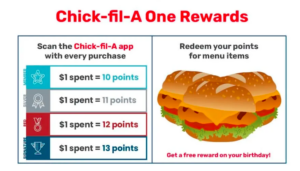
Artificial Intelligence (AI) and Machine Learning (ML) are transforming how restaurants design and implement loyalty programs. By analysing vast amounts of customer data, AI can identify patterns and preferences that might not be immediately obvious.
For example, AI can determine which types of rewards are most effective for different customer segments, allowing restaurants to tailor their loyalty offerings more precisely.
This level of personalisation leads to more engaging and relevant loyalty scheme experiences, increasing the likelihood of customer retention.
ML algorithms can predict customer behaviour based on historical data.
If a customer typically visits on weekends, the loyalty program could automatically send them a special offer on a Friday to encourage their return.
Additionally, predictive analytics can identify customers at risk of not returning and trigger targeted incentives to bring them back. This proactive approach helps restaurants maintain a loyal customer base by addressing potential issues before they arise.
AI also enables dynamic loyalty programs where rewards can be adjusted in real-time based on current demand, customer behaviour, or inventory levels.
For example, if a particular menu item is overstocked, the loyalty program could offer double points for ordering that dish, helping to manage inventory while rewarding customers.
This flexibility ensures that loyalty programs remain relevant and valuable to both the restaurant and its customers.
As consumers become more environmentally conscious, there is a growing demand for loyalty programs that align with sustainable practices.
Restaurants can respond by offering eco-friendly rewards, such as discounts for bringing reusable containers, or points for opting out of disposable utensils.
These initiatives not only reduce waste but also resonate with customers who prioritise sustainability, strengthening their loyalty to the brand.
Loyalty programs can encourage customers to make sustainable choices by rewarding them for actions like choosing plant-based menu items or participating in recycling programs.
For example, customers might earn extra points for ordering from a “green” menu or for returning packaging for reuse.
By integrating sustainability into the digital rewards program, restaurants can promote eco-friendly behaviour while building a positive brand image.
Restaurants can also enhance their loyalty programs by partnering with sustainable brands.
A loyalty program might offer rewards that include products from environmentally responsible companies or donate a portion of earned points to environmental causes.
These partnerships can broaden the appeal of the loyalty program and attract customers who value ethical consumption.
As mobile payments become more prevalent, integrating loyalty programs with digital wallets like Apple Pay, Google Wallet, and others is becoming increasingly important.
This integration allows customers to earn and redeem rewards directly through their mobile wallets, without the need for separate loyalty cards or apps.
The convenience of this system enhances the user experience and encourages more frequent participation in the loyalty program.
Mobile integration allows for a more interactive and engaging loyalty experience.
Customers can easily access their loyalty accounts, check their points balance, and receive personalised offers on their smartphones.
Push notifications can alert customers to special deals or remind them of expiring rewards, keeping them engaged with the program.
The portability and accessibility of mobile platforms make it easier for customers to stay connected with the loyalty program, no matter where they are.
Digital wallets also support contactless payments, which have become increasingly popular due to their convenience and security.
Loyalty programs that integrate with these payment methods offer a seamless, one-tap experience where customers can earn points and redeem rewards without needing to handle physical cards or cash.
This not only speeds up the transaction process but also aligns with the growing consumer preference for touch-free payment options.
Some forward-thinking loyalty programs are exploring the integration of cryptocurrencies as a form of reward.
While still in its early stages, the ability to earn and spend cryptocurrency through a loyalty program could appeal to tech-savvy customers and offer a unique value proposition.
As digital currencies become more mainstream, their role in loyalty programs may expand, offering new opportunities for both customers and businesses.
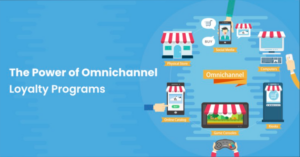
Omnichannel loyalty programs are designed to provide a seamless and consistent experience for customers across all interaction points, whether online or offline.
As technology advances and consumer behaviour shifts, restaurants are increasingly recognising the importance of integrating these experiences.
Omnichannel programs ensure that a customer’s journey is cohesive, whether they are dining in, ordering takeout via an app, or engaging with the brand on social media.
An omnichannel loyalty program connects traditional in-restaurant experiences with digital platforms.
For instance, customers can earn and redeem loyalty points not only when dining in but also when ordering through a restaurant’s app or website.
Some programs might even extend to interactions on social media, where customers can earn points for engaging with posts, sharing content, or participating in online campaigns.
This integration ensures that no matter where or how a customer interacts with the restaurant, their loyalty is recognised and rewarded.
By connecting online and offline experiences, restaurants can maintain a continuous dialogue with their customers. For example, after a customer dines in and earns points, they might receive a follow-up email or app notification encouraging them to redeem those points on their next visit or online order.
This consistent engagement across channels helps keep the restaurant top-of-mind and fosters a deeper relationship with the customer.
Several restaurant chains have successfully implemented omnichannel loyalty programs.
The Starbucks loyalty program, for example, allows customers to earn and redeem rewards whether they order in-store, via the mobile app, or online.
The Starbucks loyalty program is also integrated with the brand’s digital wallet, enabling customers to pay and earn points in one seamless transaction, regardless of the platform used.
This unified experience is key to the program’s success and customer satisfaction.
Omnichannel loyalty programs leverage data from multiple platforms to create a comprehensive view of each customer. This includes data from in-store transactions, online orders, app interactions, and social media engagement.
By consolidating this data, restaurants can develop a unified customer profile that reflects the individual’s preferences, behaviours, and loyalty status across all touchpoints.
This unified profile is crucial for delivering personalised experiences that resonate with customers.
With a unified customer profile, restaurants can tailor their loyalty programs to meet individual customer needs. If a customer frequently orders through an app but rarely dines in, the restaurant might offer a promotion that encourages them to visit the physical location.
Similarly, if a customer shows a preference for a particular menu item, targeted offers or recommendations for related items can be sent across various platforms.
This tailored approach improves the relevance of the loyalty program and boosts customer satisfaction.
One of the main advantages of an omnichannel loyalty program is the ability to offer consistent rewards and recognition across all customer touchpoints.
Whether a customer earns points in-store or online, their loyalty status and available rewards remain the same, providing a seamless experience.
This consistency helps build trust and reliability in the program, encouraging continued participation.
Additionally, consistent messaging across platforms ensures that customers always know where they stand in the loyalty program, reducing confusion and enhancing the user experience.
Cross-platform data not only enhances the customer experience but also provides valuable insights for the restaurant. By analysing data from various sources, restaurants can identify trends, such as which channels are most popular among loyal customers or which promotions drive the most engagement.
These insights can inform future marketing strategies, menu development, and even operational decisions, helping the restaurant optimise its offerings and improve overall performance.
While omnichannel loyalty programs offer numerous benefits, they also come with challenges.
Integrating data from multiple platforms requires robust technology infrastructure and a commitment to data privacy and security.
Restaurants must ensure that their systems are capable of handling large volumes of data and that customer information is protected at all times.
Additionally, creating a seamless experience across channels requires careful planning and coordination, particularly when it comes to aligning online and offline rewards.
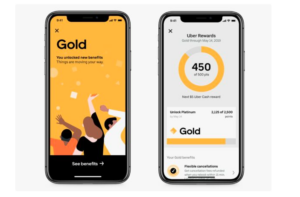
Customer loyalty is a crucial component to success for any restaurant.
Implementing an effective loyalty program can be a powerful tool to reward customers and build long-term relationships that drive repeat business and ultimately boost revenue.
By understanding the benefits of loyalty software, staying ahead of future trends, and following best practices, restaurants can create a loyalty program that not only meets customer expectations but exceeds them.
From integrating online and offline experiences to leveraging cross-platform data and offering a diverse mix of rewards, a well-executed loyalty program can transform occasional diners into loyal patrons.
As the functionality of customer loyalty continues to evolve, staying flexible and responsive to customer needs will be key. By continuously refining and optimising their loyalty programs, restaurants can ensure they remain relevant and valuable to their customers.
